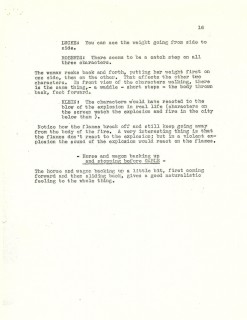Category ArchiveAction Analysis
Action Analysis &Animation &Animation Artifacts &Disney 28 Feb 2012 06:09 am
Action Analysis – May 3, 1937
- For a while I was posting the Action Analysis Notes from the Disney Studio’s after/hours classes back in 1937. For some reason I was distracted from that mission and stopped with the April of ’37 notes. Well, I’m back with more and will continue with what notes I have.
The following lecture took place on May 3, 1937.
It’s an analysis of a film clip starring Patsy Kelly as she angrily strides over obstacles and is finally stopped by a man and calmed down.
The participants of the class include: Joe Magro, Bill Shull, Jacques Roberts, Izzie Klein, Aurelius Battaglia, David Rose, Ken Petersen, and Robert Carlson.
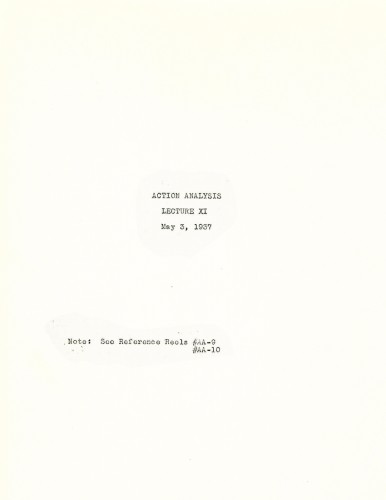
Cover page
.
- You’ll find past posted notes here if you’re looking for them, but you’ll also have to scroll through some animation art to get to them.
Action Analysis &Animation &Animation Artifacts &Disney 30 Nov 2011 06:36 am
Mickey and the Shadows – 1
- Having seen the entirety of Mickey chasing the broom into the adjoining room, we now take up the shadows that show us what Mickey does in there. Again there are many drawings (it’s all on ones) so this is the first part. (See past posts here.)
It’s animated by Riley Thompson with Harvey Toombs assisting. The sequence director was James Algar.
 1
1 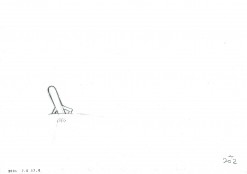 2
2
____________________________
The following QT incorporates all the drawings from this post
All previous posts will be combined in the final piece.
All drawings were exposed per the Exposure Sheets.
Action Analysis &Animation &Animation Artifacts &Disney 16 Nov 2011 07:14 am
Mickey and the Brooms – 3
- This is the third part of the famous scene from Fantasia wherein Mickey Mouse finally kills off the non-stop broom. He axes it into pieces. This post concludes all the drawings of Mickey; from here on out we have Mickey’s shadow doing the dirty work.
The scene was animated by
Riley Thomson with an assist from Harvey Toombs.
The sequence was directed by Jim Algar.
This is production #2004- Seq. 7 – Scene 53. It runs 28 ft. 3 frs.
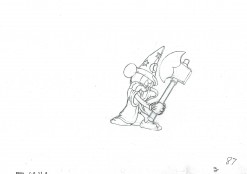 87
87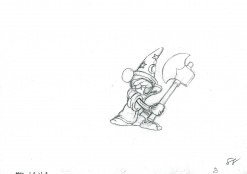 88
88
____________________________
The following QT incorporates all the drawings from this post
as well as the previous posts, Part 1 & Part 2.
All drawings were exposed per the Exposure Sheets.
Action Analysis &Animation &Disney 23 Aug 2011 08:06 am
Action Analyisis – April 26, 1937
- These are the notes for the Disney studios after hours classes on Action Analysis give on April 26, 1937.
The action they studied was a loop from a Charlie Chase film wherein he throws apples from a fruit stand while the attendant tries to stop him. They are particularly studying the drapery involved. Don Graham, as usual, conducts the class with involvement from: Roy Williams, Milt Neil, Joe Magro, Rose, (Ray?) Patin, and Izzie Klein.
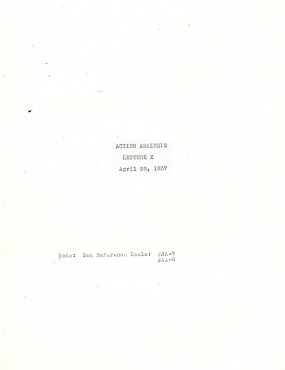
Cover sheet
Just a reminder that there are many more Action Analysis class notes on Hans Perk’s invaluable site, A Film LA.
Action Analysis &Animation &Books &Disney &repeated posts 10 Aug 2011 07:07 am
Tytla’s Willie – recap
Continuing with my recap of all things Tytla, here’s a post I did on Tytla’s work on The Brave Little Tailor.
- When I was a kid, I was never a big fan of the “Willie” character, the giant in Mickey & the Beanstalk. It seemed that every fourth or fifth Disneyland tv show would have this character in it (or else Donald and Chip & Dale). As I got older and grew a more educated eye for animation, I came to realize how well the character was drawn and animated.
Willie first appeared in the classic Mickey short, The Brave Little Tailor, and he appeared fully formed. Bill Tytla was the animator, and he appeared to have fun doing it.
In John Canemaker‘s excellent book, Treasury of Disney Animation Art, there are some beautiful drawings worth looking at. Here they are:
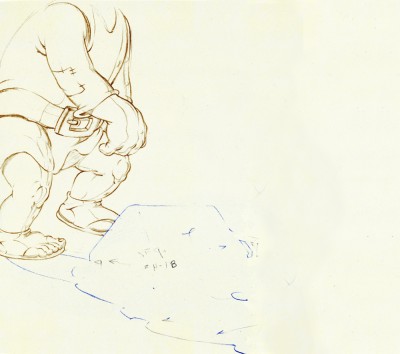 1
1(Click any image to enlarge.)
So let’s take a closer look at some of these drawings.
.
Drawing #3 features this weight shift. As the right foot hits the ground it pronates – twists ever so slightly inward. The hands do just the opposite. The left hand reaches in while the right hand holds back, completely at rest.
It’s a great drawing.
.
.
.
Drawing #4 shows Willie landing on that right foot, and his entire body tilts to the right. The hands twist completely to the left trying to maintain balance. The left foot up in the air is also twisting to the left before it lands twisting to the right.
.
.
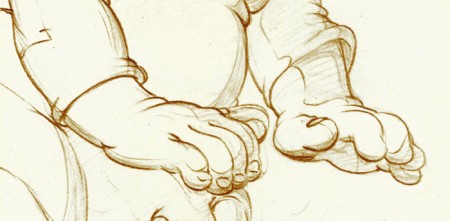
I love how drawing #5 features the two hands flattened out to
make his final stand before sitting down. It’s all about gaining balance.
.
.
.
.
Just take a look at this beautiful head in drawing #6. He’s seated, his head has come forward and tilted forward. The distortion is so beautiful it almost doesn’t look distorted.
What a fabulous artist! This guy just did this naturally.
.
.
.
This scene begins with the seated giant eyeing the tiny Mickey Mouse in his hand. The characters are drawn beautifully almost at a rest waiting to get into the scene. The intensity of Willie’s glare is strong, and it’s obvous Mickey is in trouble.
.
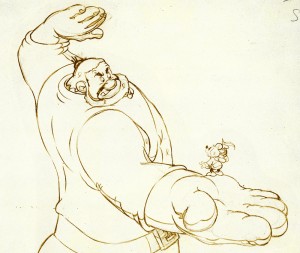 Here’s the drawing of the sequence.
Here’s the drawing of the sequence.
The major problem with drawing a giant is his proportion to all the other characters. The screen is more oblong and horizontalal than it is square. (Fortunately, when this film was done it was closer to a square but still not one.) Throughout the film, Tytla had to deal with a BIG Giant and little Mickey. The landscape is also small.
An obvious way of handling it – and one that would be done today, no doubt – would be to force perspective showing it from the ground up – most of the time. In the 30′s and 40′s they stuck to the traditional rule of film and editing, and they would NOT have done this.
Tytla plays with scale as the giant steps over a house and ultimately sits on it.
In this drawing, he does a brilliant drawing forcing the perspective with Mickey in the foreground and Willie’s left hand in the distance. The giant draws into this forceful perspective without calling attention to itself. Today it would be more exaggerated, but Tytla doesn’t want it to be noticed – just felt.
A real bit of art!
Here, Willie moves through that perspective of the last extreme, and he gets larger as he slams his hands to flatten Mickey. To exaggerate that flattening, Willie’s hands flatten for this key drawing. His head flattens as well in grimace.
The giant’s head will move in toward the hands to see the results, and the audience has a front row seat seeing Mickey escape up the giant’s sleeve. There’s a lot going on in this drawing.
.
.
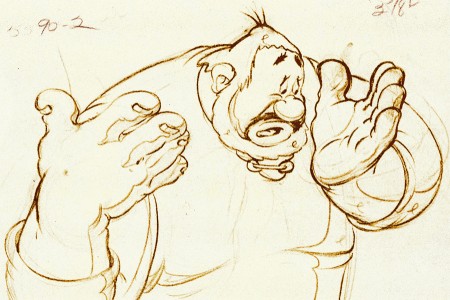
Finally, Willie tries to figure out what’s happened.
The drawing loses most of its distortion and comes to rest.
(Note that there’s still perspective distancing between the two hands.)
Mark Mayerson has done a mosaic breakdown of this cartoon and adds his excellent commentary.
Hans Perk on his site, A Film LA, has just posted the drafts to the earlier Disney short, Giantland. The draft for The Brave Little Tailor was posted a while back on this great site.
Action Analysis &Disney 02 Aug 2011 08:16 am
Action Analyisis – April 19, 1937
- We return to the Disney Action Analysis notes for the classes held at the studio in after hours in early 1937. (You’ll remember that we left off with the April 5 notes that were posted out of order. Thanks to Mike Barrier contributing those notes that I didn’t have.)
Here we have the notes for April 19, 1937. Screened is a loop of a Charlie Chase action. Chase was a Vaudevillian who slipped into silent movies, became a star in the Hal Roach studios. When sound came in his star fell a bit. He performed minor roles in many films including Three Stooges comedies. He died in 1940 at the age of 46.
Taking part in this session are the following: Bill Shull, Ken Peterson, Bernie Wolfe, Roy Williams, Robert Leffingwell, Milt Neil, Joe Magro, Paul Satterfield, Jimmie Cullhane, Stan Quackenbush, Izzie Klein, Jacques Roberts, and Bill Tytla. They are definitely looking at him with the dwarfs in mind.
Here are the notes:
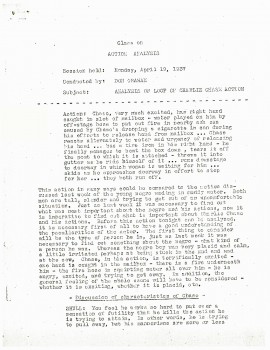 1
1Acts as the cover page
A small note on these documents. Some of you may have noticed that infrequent peg holes show up on some of the scans on the left side. This is because the originals were printed on 5 hole animation punched paper. A couple of the documents I’ve posted came from originals, but many of these are copies of copies and the image of the holes has vanished into the old Xerox ether.
Action Analysis &Animation Artifacts &Disney 19 Jul 2011 07:00 am
Action Analysis – April 5, 1937
- We’re taking a step back before we go forward. Last week I posted the April 12th, 1937 edition of the Action Analysis notes from the Disney studio’s after hours class. I had to skip the April 5th notes because all I really had was the cover page. The actual notes weren’t included. Mike Barrier to the rescue. He sent me the correct notes for April 5th, and I’m now able to post them here.
Don Graham conducts the session which includes some footage from “Bum Voyage” starring Thelma Todd and Patsy Kelly. This is a 1934 feature from MGM and Hal Roach Studio. A madcap sequence which shows Thelma being chased by Patsy in a Gorilla outfit. Unfortunately, Netflix doesn’t seem to have this film, nor has TCM issued a dvd, as yet.
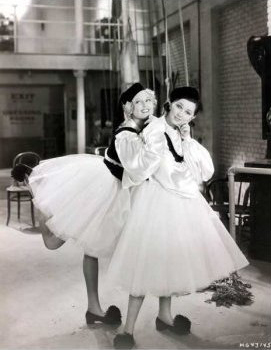
Mark Sonntag directed me to this great still
from “Bum Voyage” for sale on ebay.
Those who participate in the lecture include: Izzy Klein, Bernie Wolf, Joe Magro, Roy Williams, Eddie Strickland, Stan Quackenbush, Jacques Roberts, Chuck Couch and Jack Hannah.
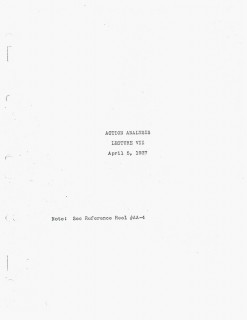
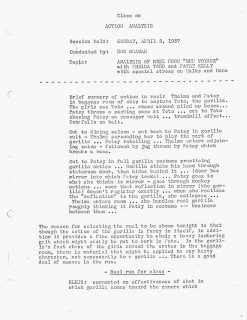 1
1
Action Analysis &Animation Artifacts &Articles on Animation &Disney 12 Jul 2011 06:46 am
Action Analysis – April 12, 1937
- Onto the next week’s class of Action Analysis at the Disney Studio, after hours. Actually, I’ve skipped a week. I only have four pages of the notes from the April 6 1937 class. Since it is missing a dozen pages, I’m not sure how worthwhile it’d be to post it. So I’ve skipped to this very full session.
Don Graham teaches. The film they study shows a 12 ft. (8 secs.) bit of a man picking himself up from mud – dragging and wading through mud. (It’s a little embarrassing posting this which actually reads: “Loop of young negro picking himself up from mud . . . Those were the days of feckless, racist behavior.) Obviously, we can’t see the footage (which is probably still somewhere in the Disney vaults), but we can pick up lots of information from the lesson.
The attendees who participate include: Jack Hannah, John Vincent Snyder, David Rose, Izzie Klein, Joe Magro, Chuck Couch, Robert Leffingwell, Milt Neil, Roy Williams, and Paul Satterfield.
Read on.
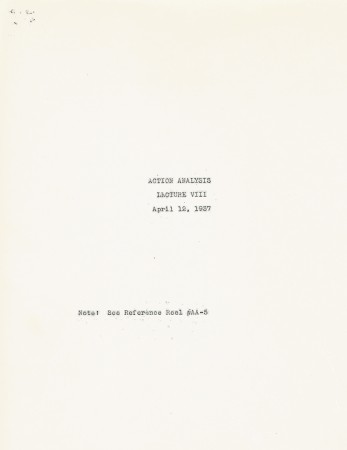
Title page
Action Analysis &Animation Artifacts &Articles on Animation &Disney 23 Jun 2011 06:56 am
Action Analysis – March 29, 1937
- I continue, today, with the Action Analysis notes from the lectures given at the Disney studio by instructor, Don Graham. The lectures were often built around film sequences that were screened. In this lecture, they screened a sequence from Charlie Chaplin’s Easy Street as well as an in-house loop of a man walking with two children.
The animation personnel who attended and participated on this lecture included: Reuben Timmins, Izzy Klein, Jacques Roberts, Bernie Wolfe, Chuck Couch, Jack Hannah, Amby Paliwoda, Bill Tytla, and Bruce Bushman.
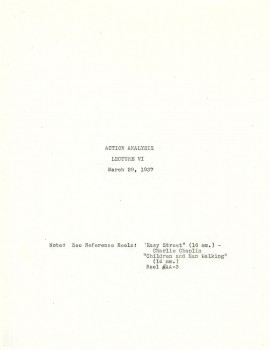
Cover
If you enjoy reading these Action Analysis notes, there are a wealth of them on Hans Perk‘s wonderful resource of a site, A Film LA. Many of them from earlier periods than these that I’m posting.
Action Analysis &Animation Artifacts &Articles on Animation &Disney 16 Jun 2011 07:32 am
Action Analysis – March 22, 1937
- Today we continue with the Action Analysis notes from the lectures given at the Disney studio by instructor, Don Graham. The lectures, at this point, were generally built around film sequences that were screened. Oftentimes they were past Disney films, other times they were live action sequences from other studios. In this lecture, they were scenes from the Clark Gable feature, San Francisco. (This can be rented from Netflix or other distributors or can be often seen on TCM.)
The animation personnel who attended and participated included: Izzy Klein, Joe Magro, Jacques Roberts, Jimmie Culhane, Bill Tytla, Eddie Strickland, Bill Shull Moe Gollub (misspelled as Gallub) and Bernie Wolfe.
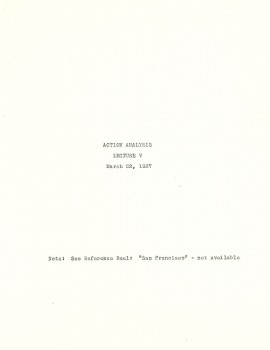
Cover
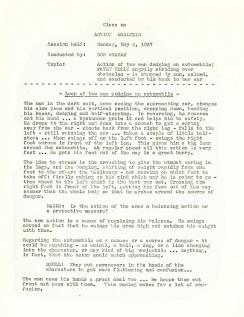
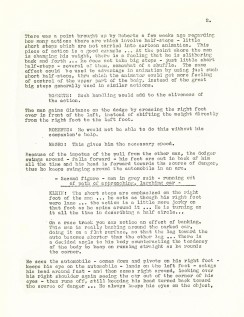
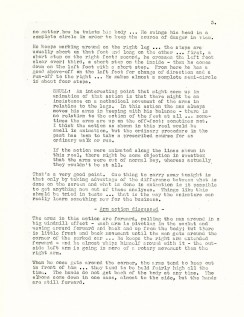
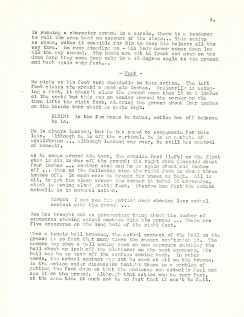
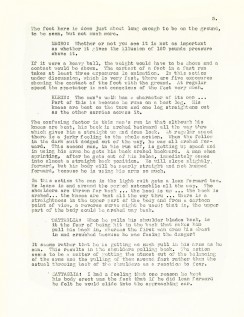
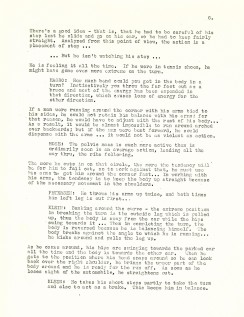
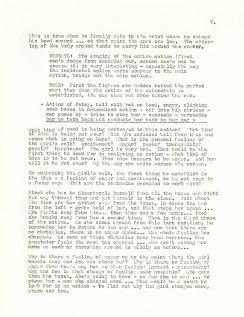
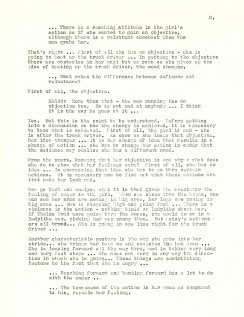
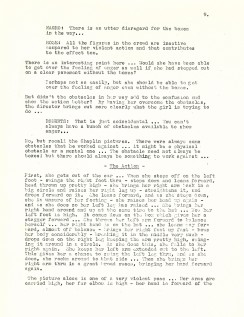
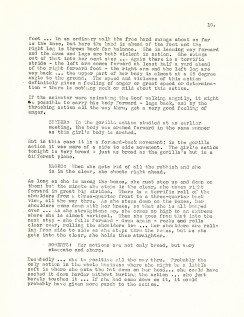
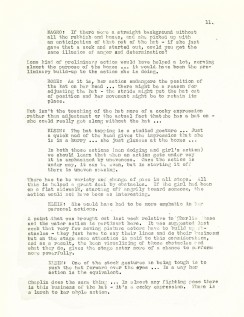
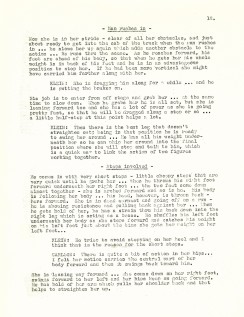
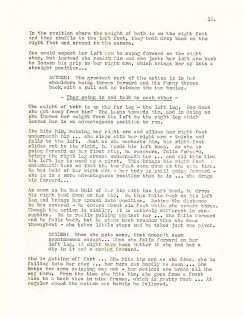
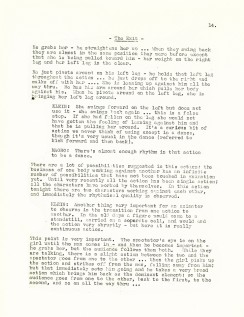
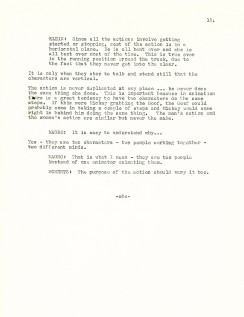
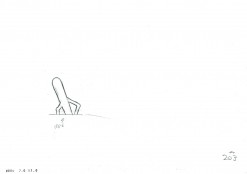
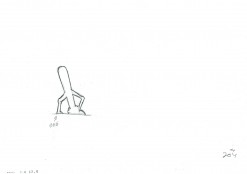
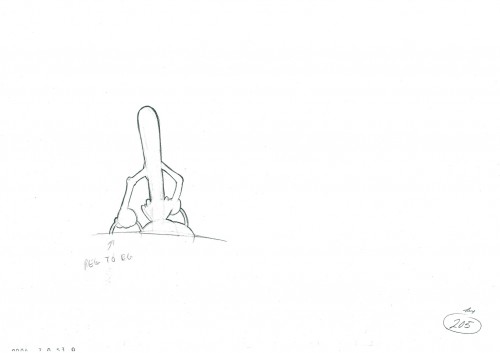
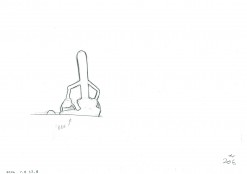
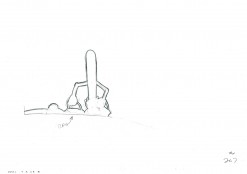
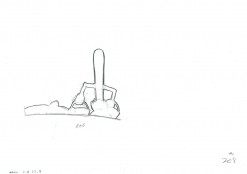
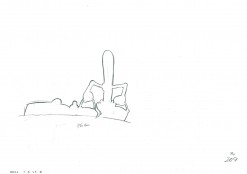
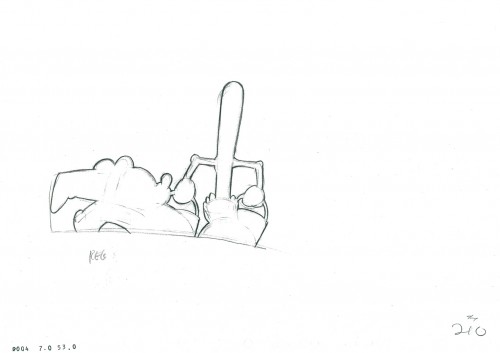
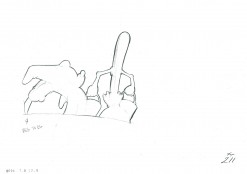
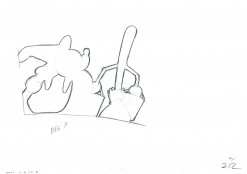
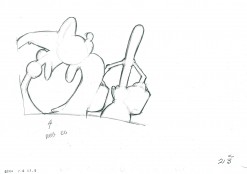
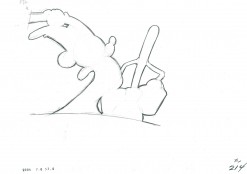
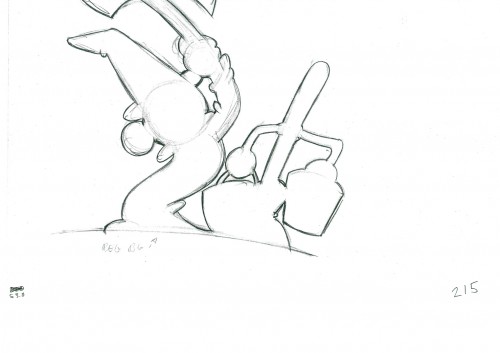
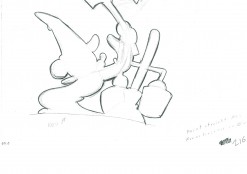
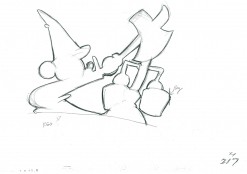
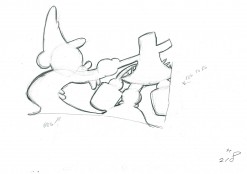
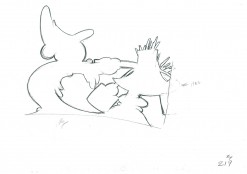
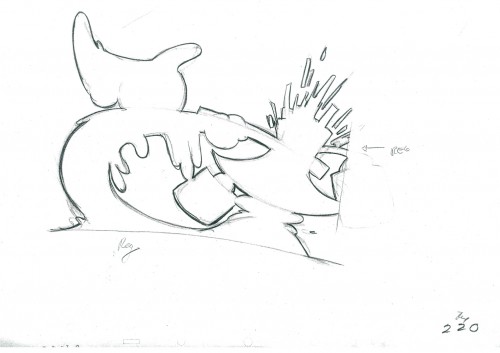
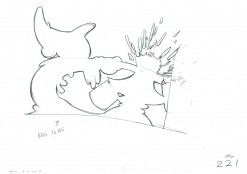
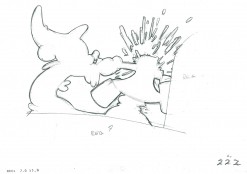
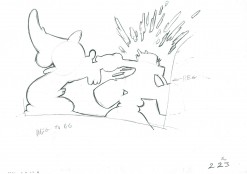
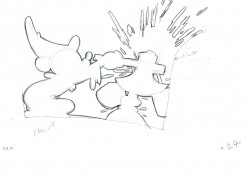
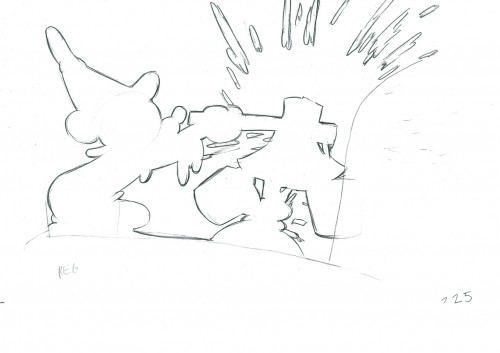
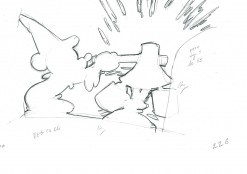
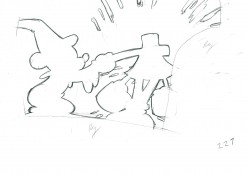
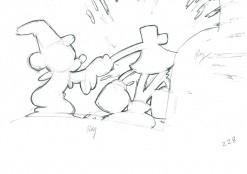
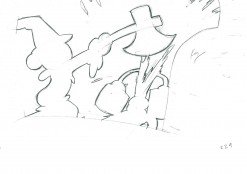
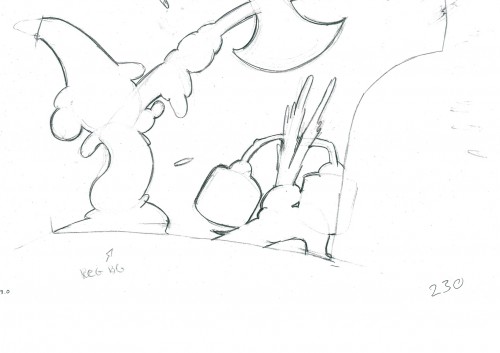
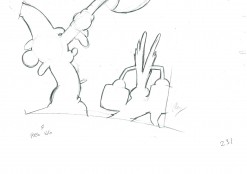
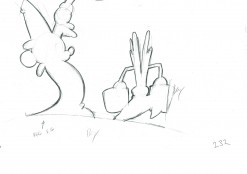
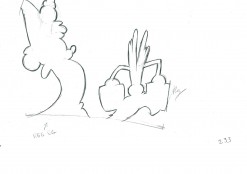
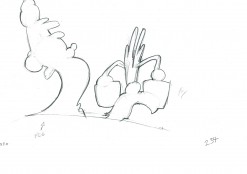
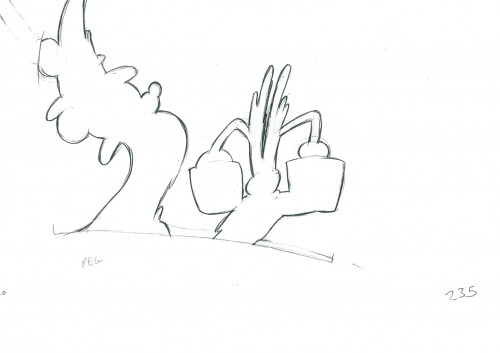
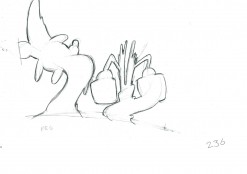
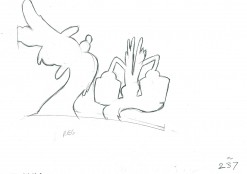
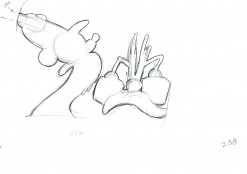
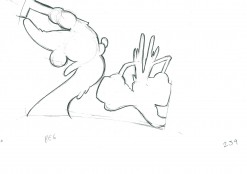
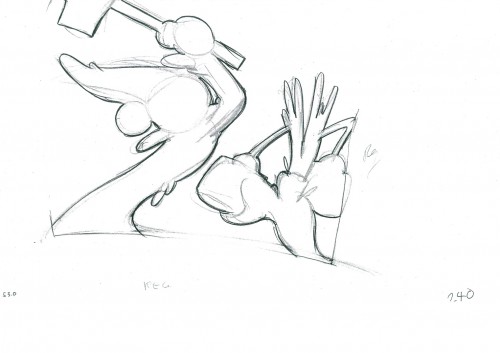
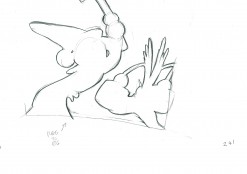
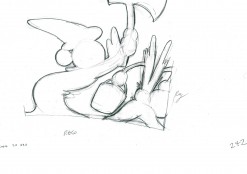
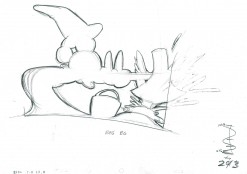
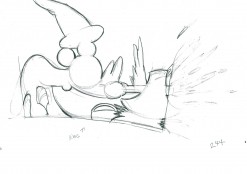
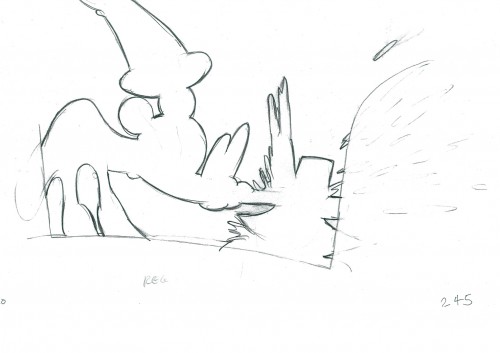
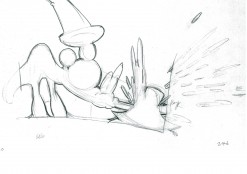
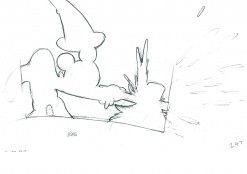
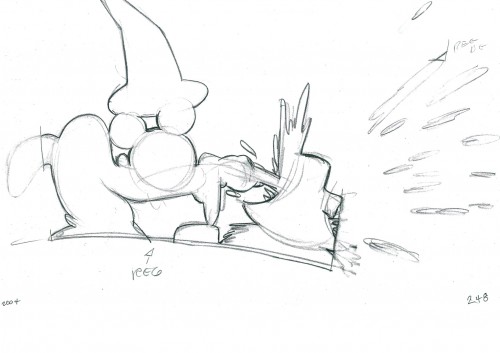
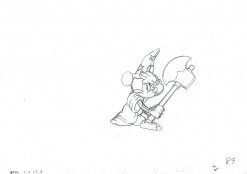
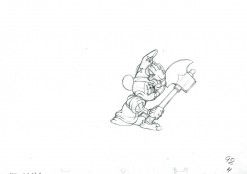
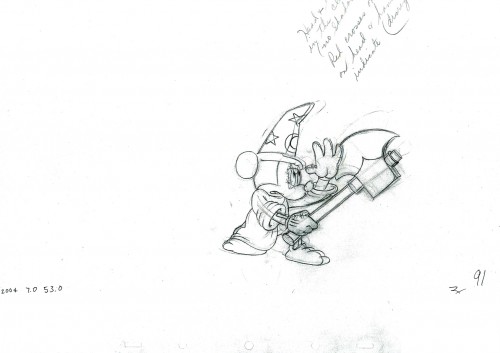
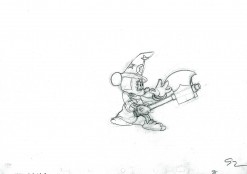
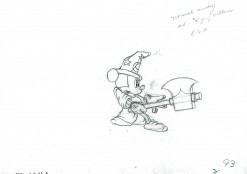
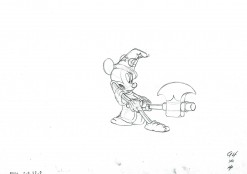
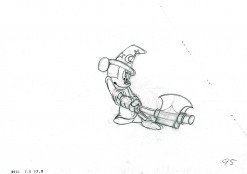
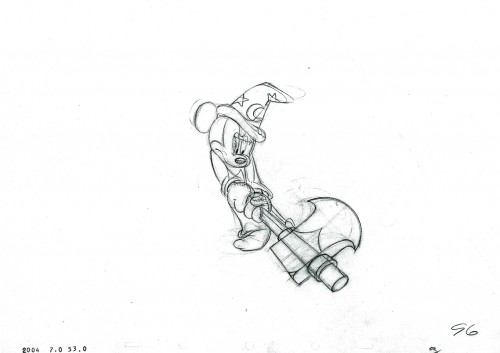
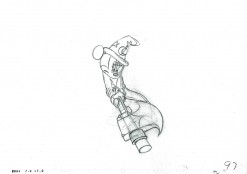
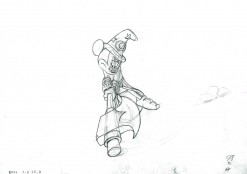
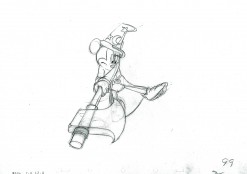
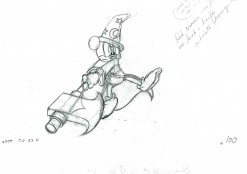
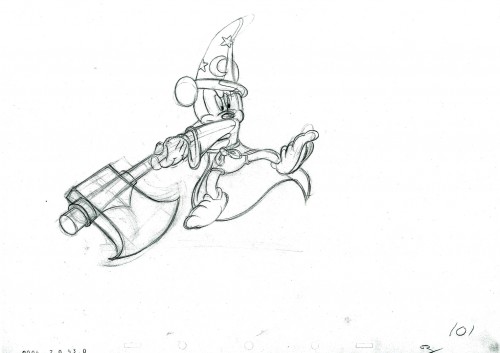
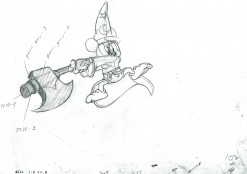
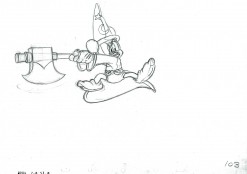
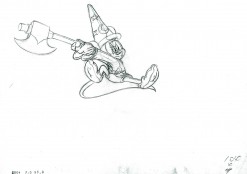
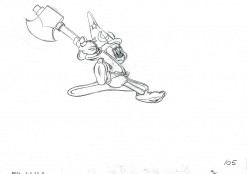
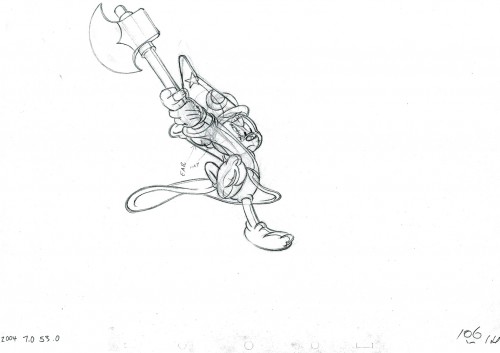
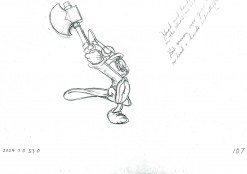
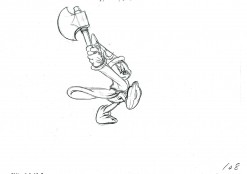
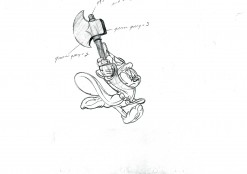
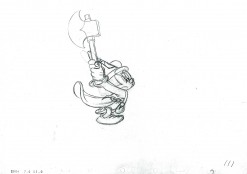
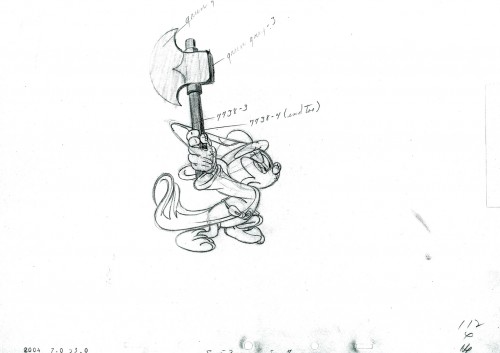
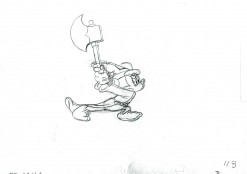
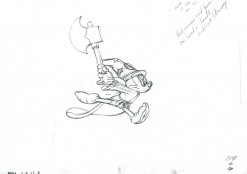
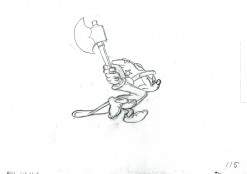
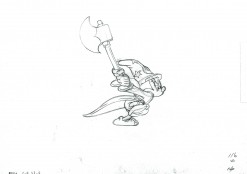
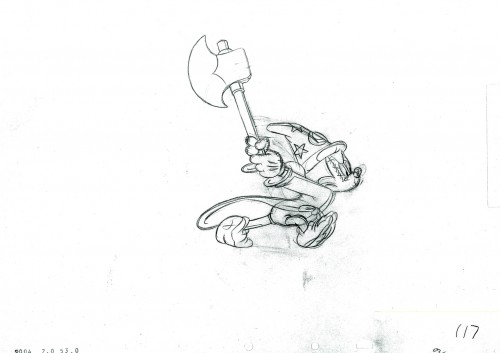
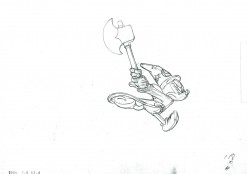
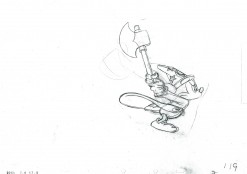
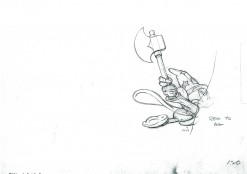
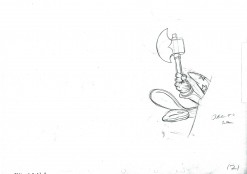
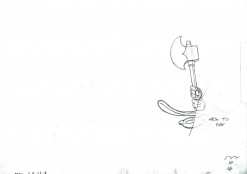
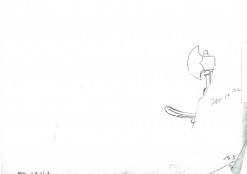
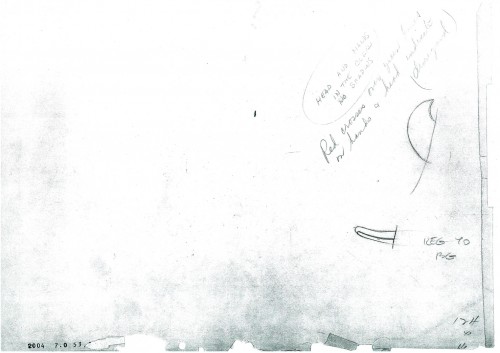
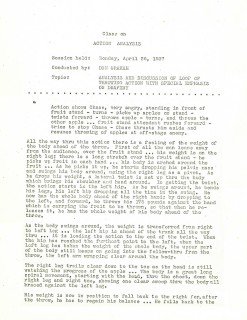
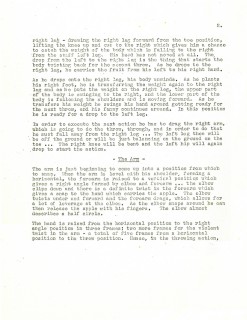
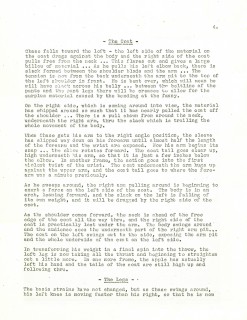
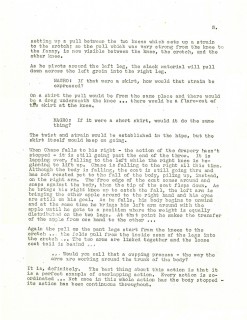

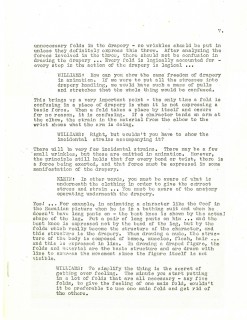
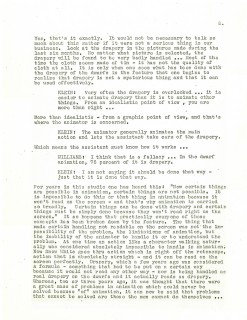
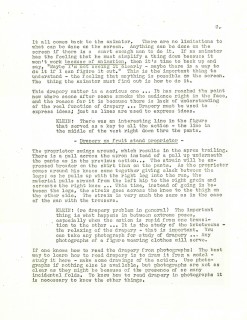
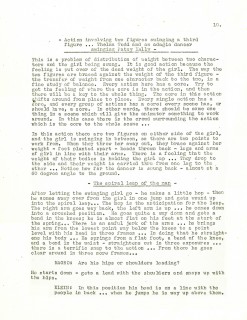
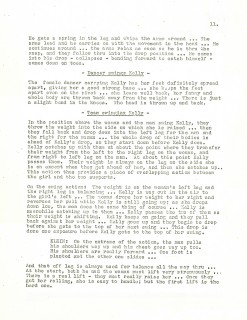
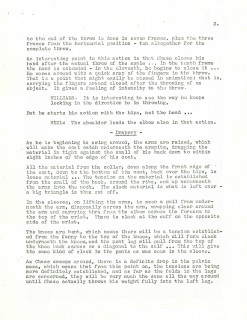
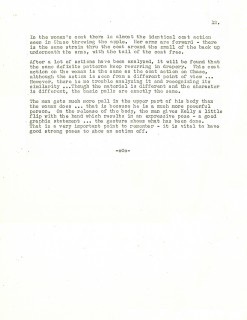
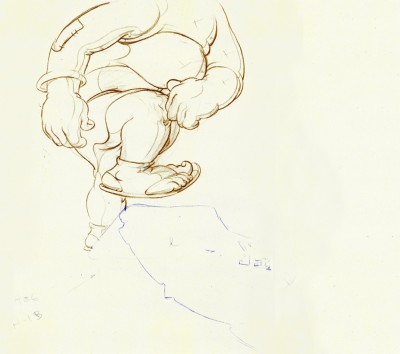
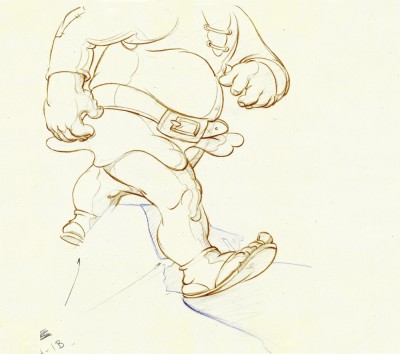
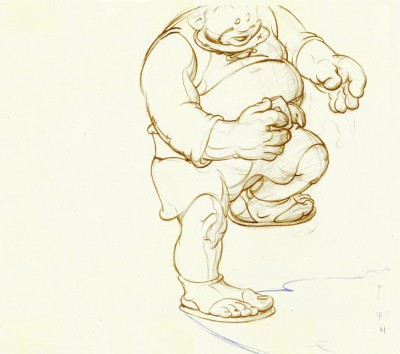
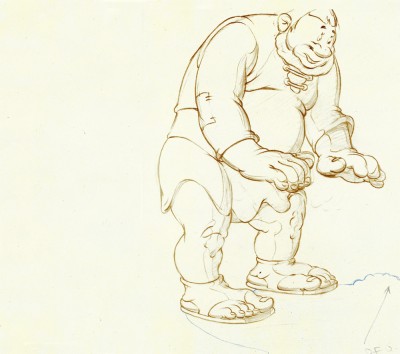
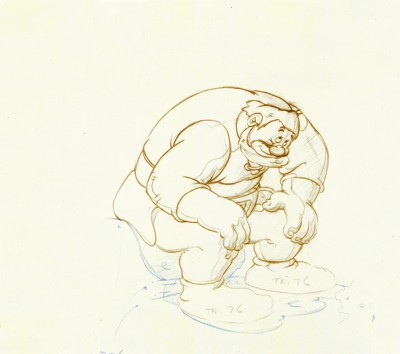
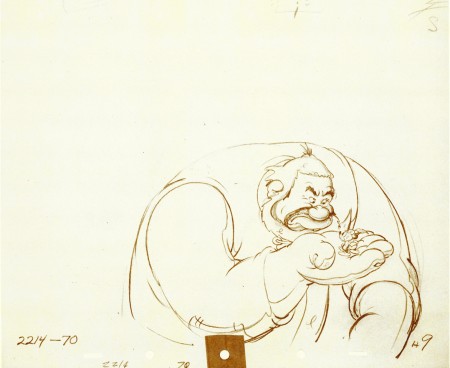
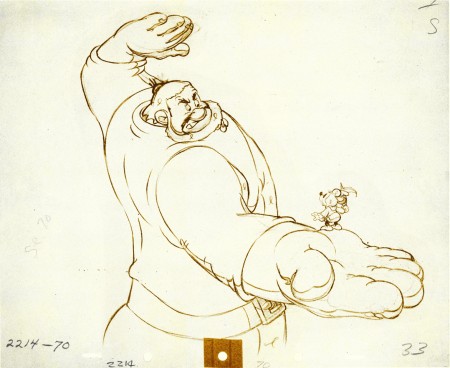
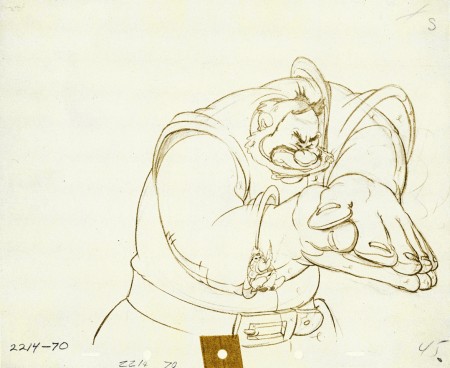
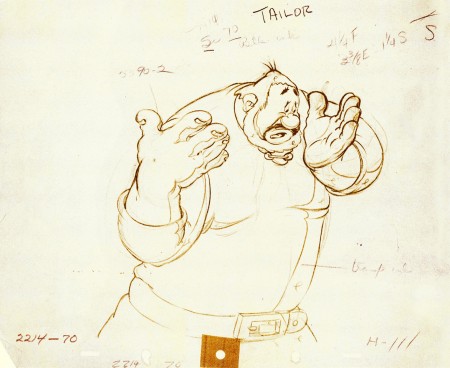
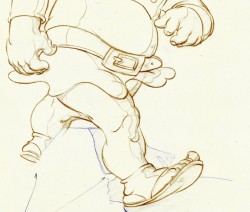
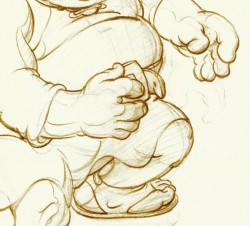
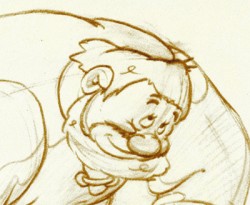
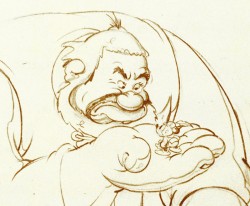
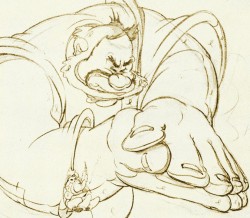
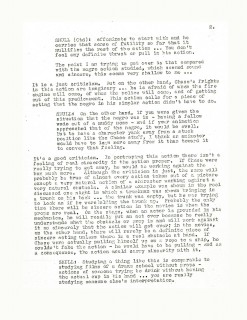
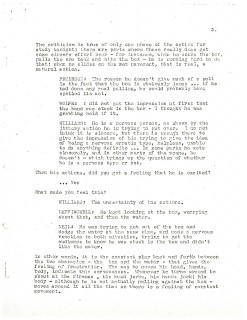
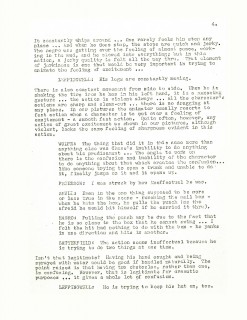
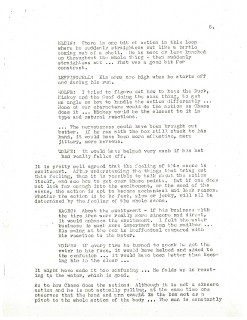
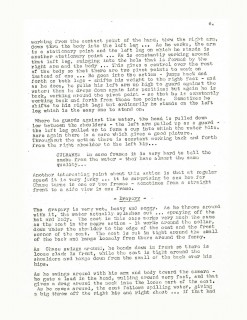
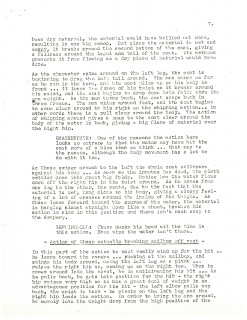
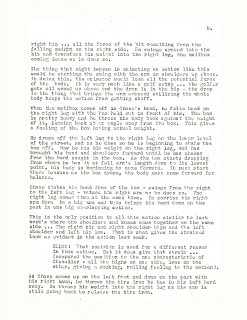
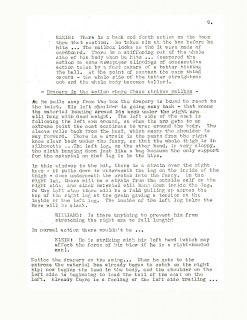
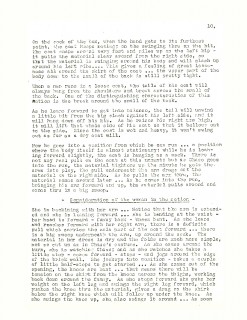
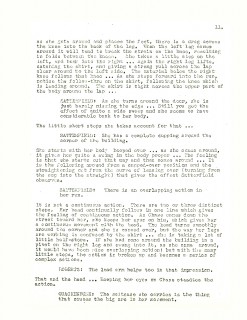
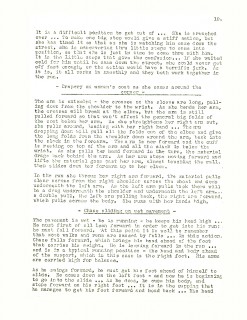
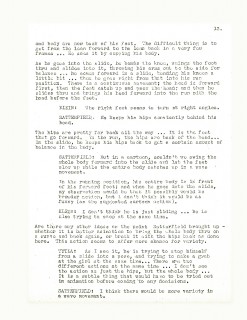
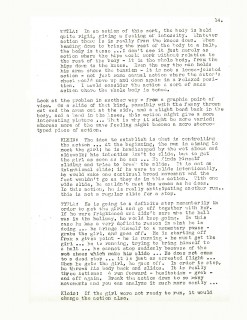
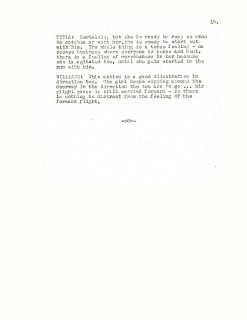
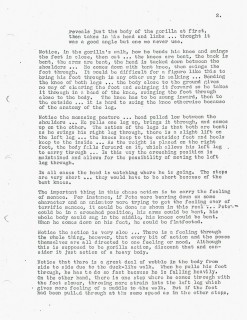

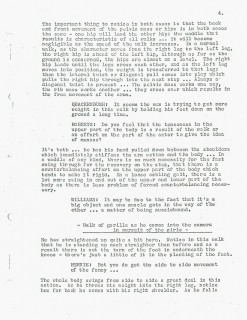
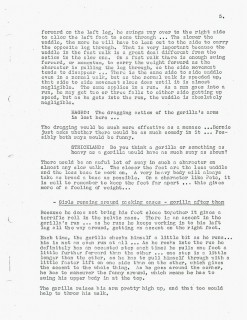
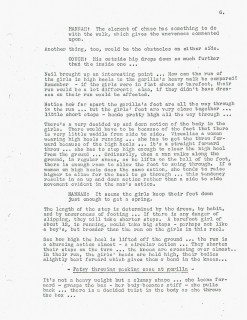
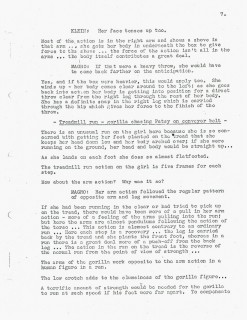
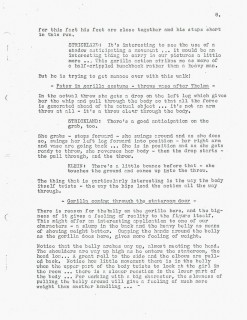
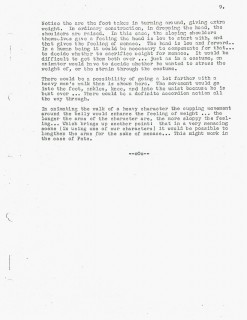
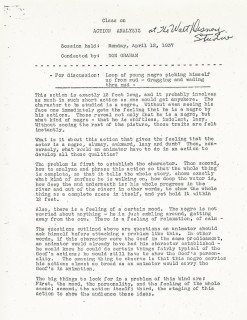
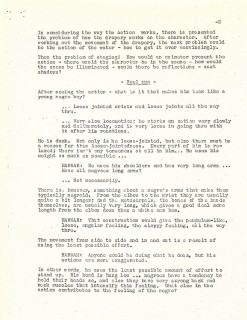
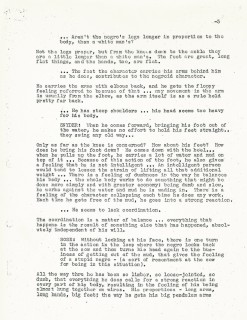
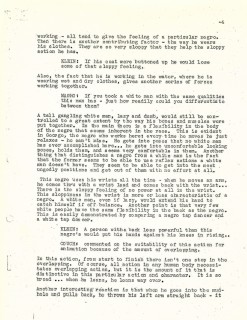
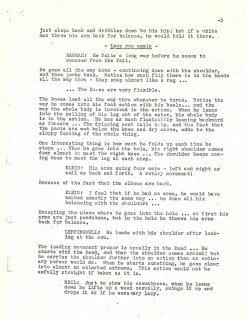
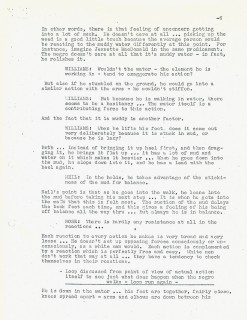
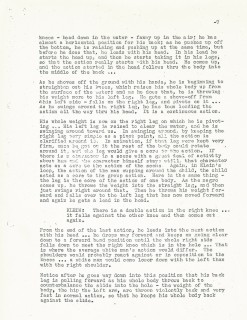
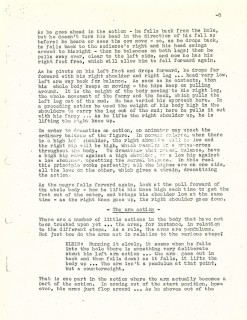
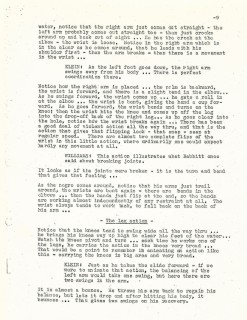
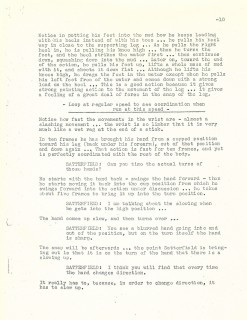
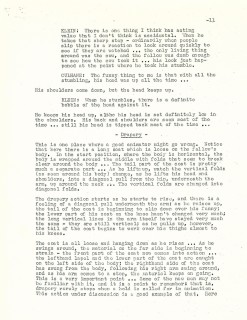
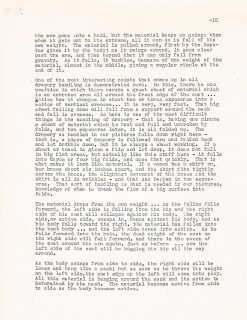
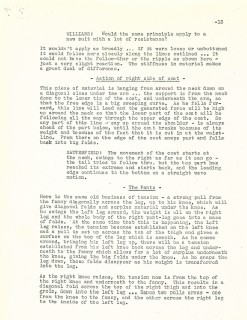
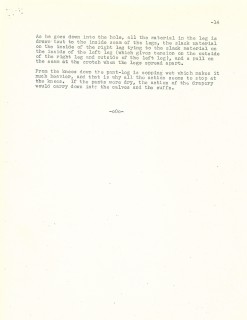
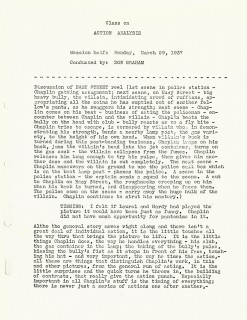
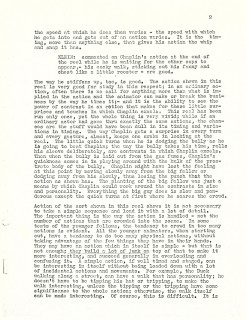
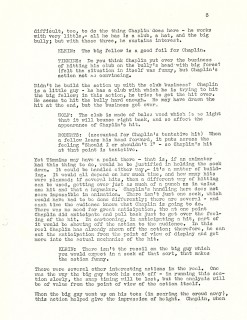
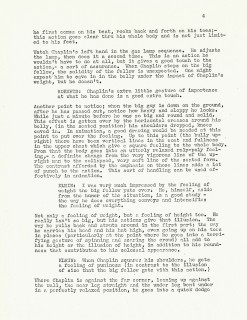
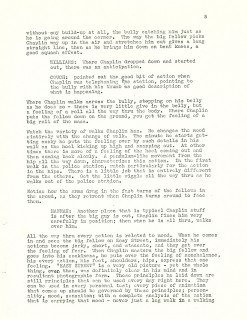
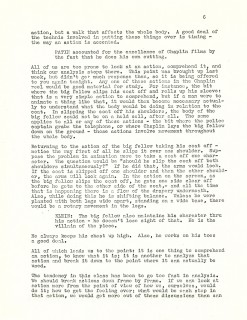
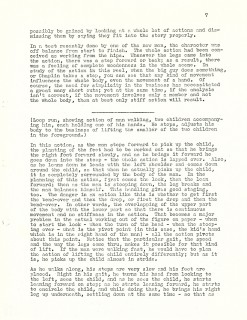
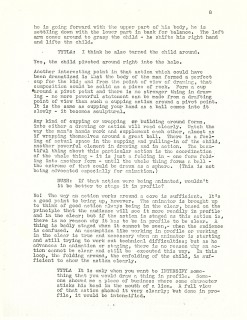
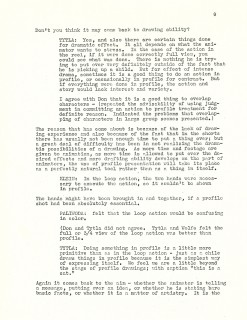
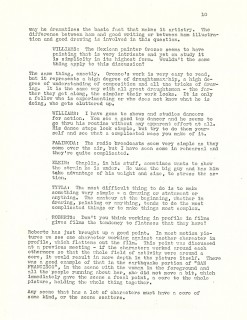
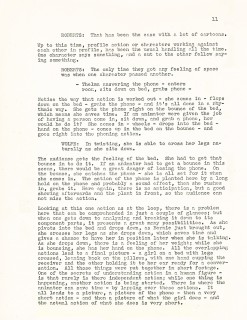
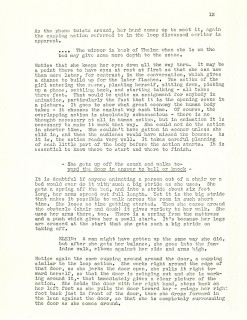
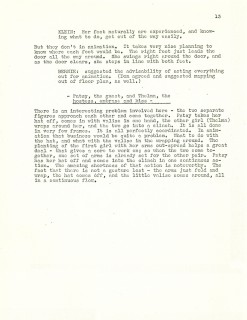
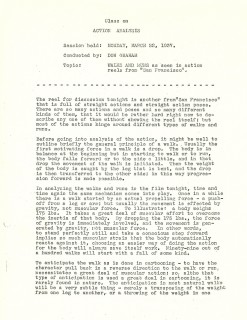
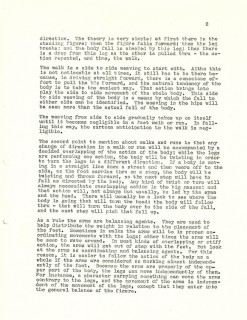
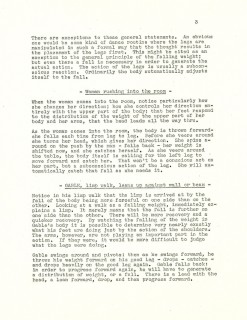
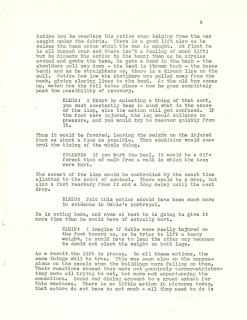
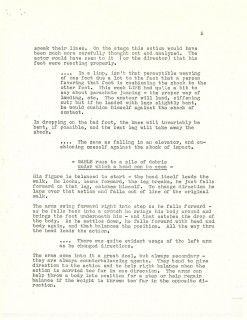
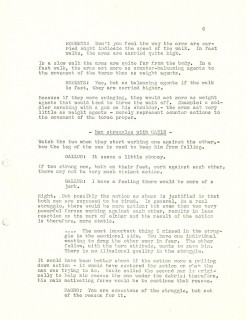
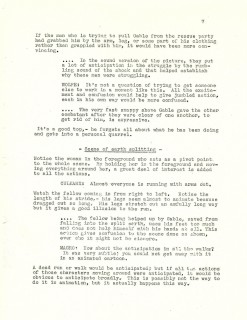
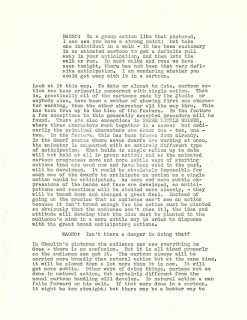
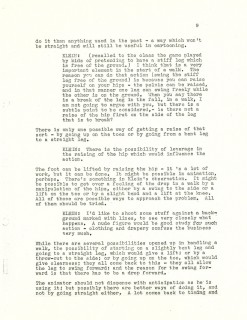
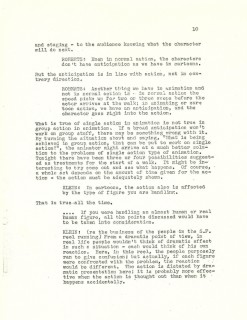
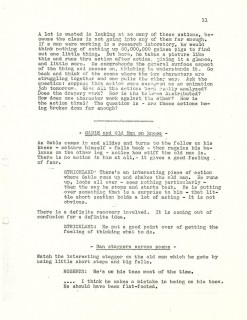
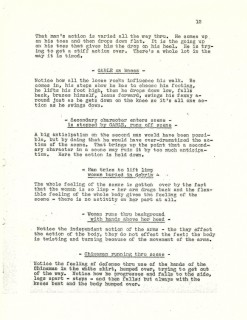
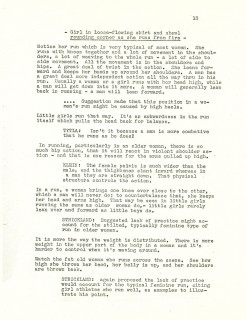
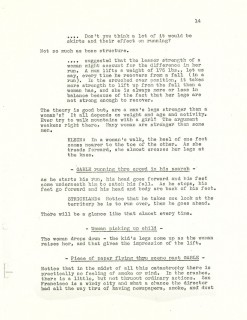
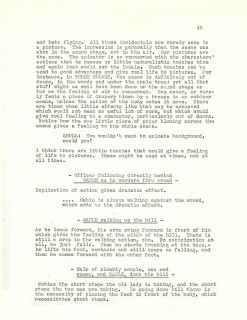 15
15